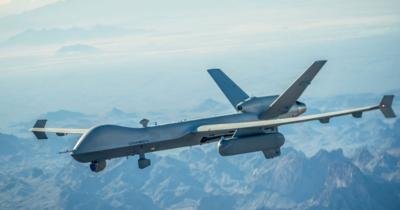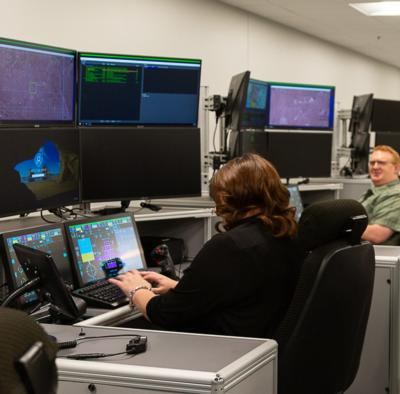Blue Reports Zero Costs to US Taxpayers for Offers to Arm, Train UAF with MQ-9, MQ-1
General Atomics Chief Executive Officer Linden Blue commented on the current zeitgeist that exists between the company and the war in Ukraine, touching on everything from lessons learned to costs to American taxpayers.

His comments come as the world approaches the 1-year anniversary since the fighting began, a fight that many around the world have watched with interest as the real-world combat stretches the boundaries of warfighting technology. Uncrewed systems have been a visible change in the fight, providing thousands of hours of footage battling allies and rivals like. General Atomics, the gold standard in American military UAV tech, has naturally been on the shortlist when it comes to Ukrainian armament requests.
"The world has reacted in almost unanimous support for the Ukrainian cause," Linden Blue said, "but those efforts have overlooked one of the most obvious and force-multiplying technologies of modern warfare: Long-range and enduring, stand-off sensing, unmanned aircraft systems."

"General Atomics Aeronautical Systems is dedicated to providing information dominance to its partners. From the outset of the Russian invasion, we began looking for options to respond to the requests of Ukrainian forces with our products, including the MQ-9 Reaper and MQ-1C Gray Eagle. Both systems have been used to devastating effect in combat by U.S. and partner nations for more than two decades and remain the gold standard for high-quality, medium-altitude UAS in the world."
He allayed any fears that systems or training would be purchased with taxpayer funding and shipped for free to Ukrainian allies - a common fear in the current economic waters.
"We have offered to train Ukrainian operators on these systems at no cost to U.S. taxpayers or the Ukrainian government. We have offered flexible options and recommendations for delivery. We have discussed the situation endlessly at every level of the U.S. federal government, and with many international partners. Recently, we offered to transfer two of our own, company-owned training aircraft, plus the ground control station and other hardware required to operate them, for the symbolic price of $1, and reiterated our offer to train the first cadre of pilots and maintainers at our expense."

Blue said that much of their efforts have come directly out of General Atomics' own coffers, and that any holdups in seeing Ukrainian Air Force MQ-9s comes from a litany of factors outside his company's control.
"Many of the additional costs associated with readying these aircraft for combat, outfitting them with the necessary equipment, transporting them to Ukraine, setting up operations in that country, obtaining satellite bandwidth and providing additional supporting labor, are outside of our control. Our estimates for launch and ongoing operations do not include one penny of profit to our company."
Given the fact the country is a war zone, it's understandable that setting up novel, military-hardened telecommunications suitable for the world-class MQ-1C and MQ-9 could take some time. In closing, Blue alludes to what could be a plea to grease the bureaucratic wheels to allow a technology transfer, possibly indicating some ITAR considerations that hamper a quick delivery of US-spec aircraft.
"All that is required is approval from the U.S. government. Our goal is now, and has always been, to help the Ukrainian armed forces defend and protect their homes and families, and help bring a rapid closure to this conflict before more lives are lost. There are limits to what an American defense company can do to support a situation such as this. From our perspective, it is long past time to enable Ukrainian forces with the information dominance required to win this war."
 NTSB Final Report: Patriot Aircraft LLC CX1900A
NTSB Final Report: Patriot Aircraft LLC CX1900A Aero-News: Quote of the Day (12.06.25)
Aero-News: Quote of the Day (12.06.25) ANN's Daily Aero-Term (12.06.25): High Speed Taxiway
ANN's Daily Aero-Term (12.06.25): High Speed Taxiway ANN's Daily Aero-Linx (12.06.25)
ANN's Daily Aero-Linx (12.06.25) Airborne-NextGen 12.02.25: Honda eVTOL, Arctus High-Alt UAS, Samson Patent
Airborne-NextGen 12.02.25: Honda eVTOL, Arctus High-Alt UAS, Samson Patent





